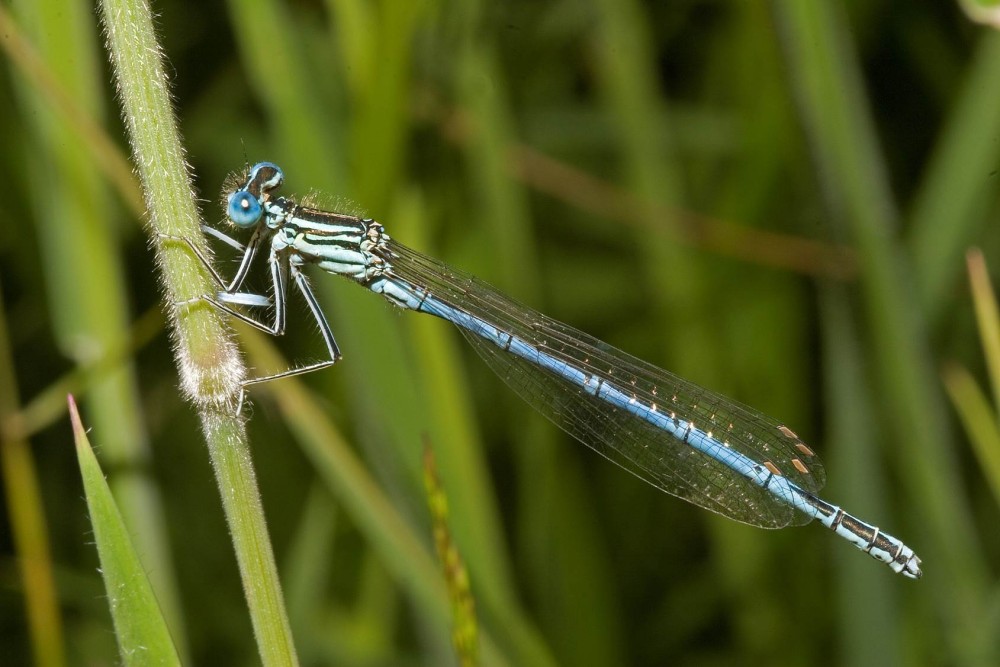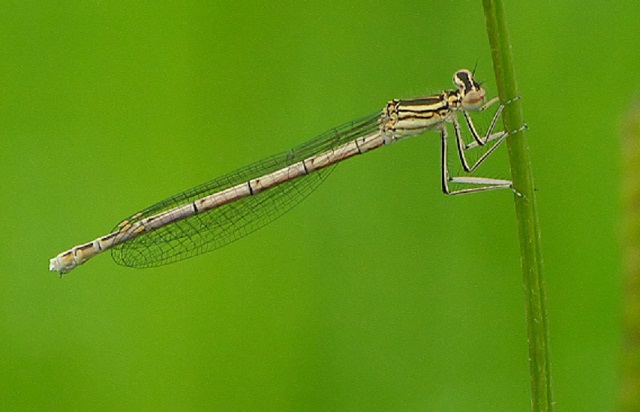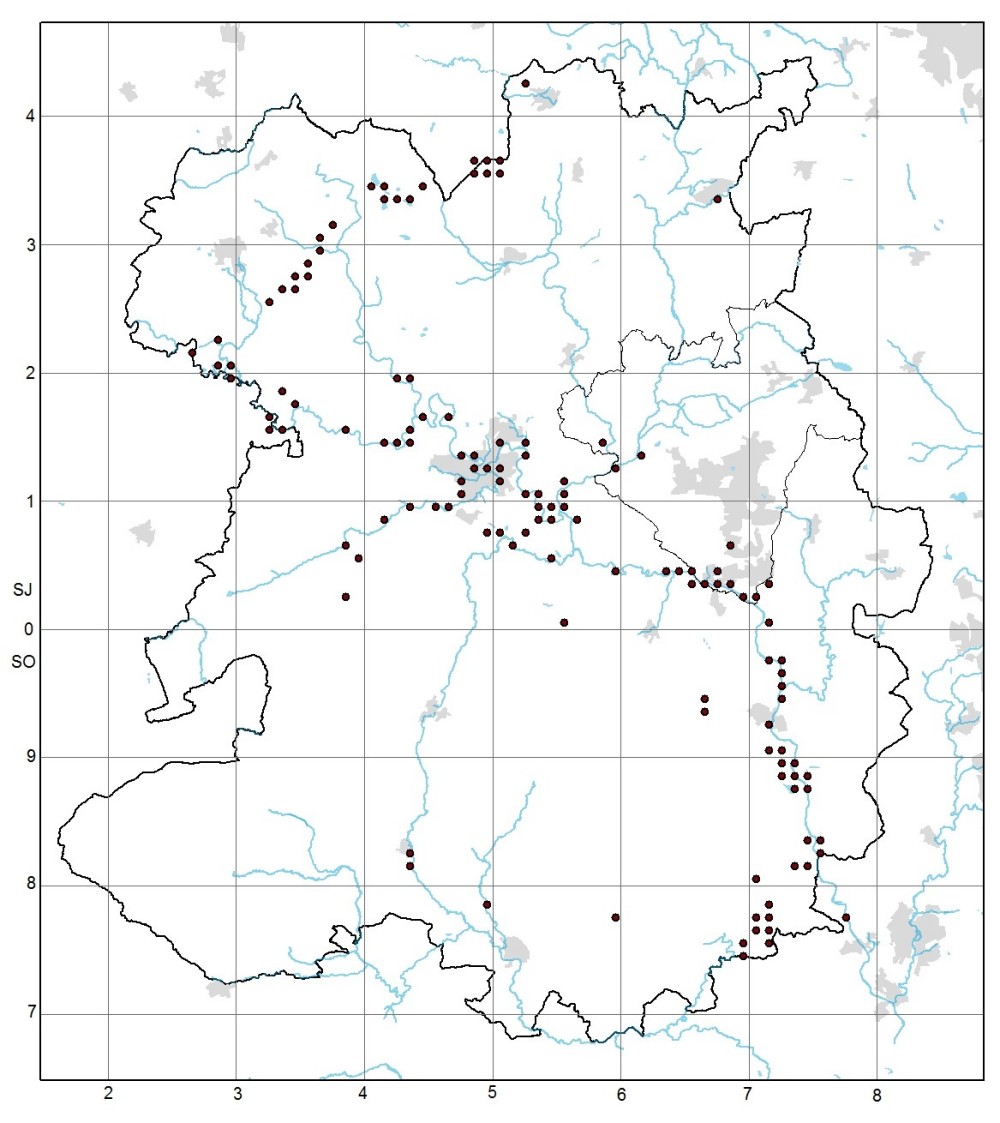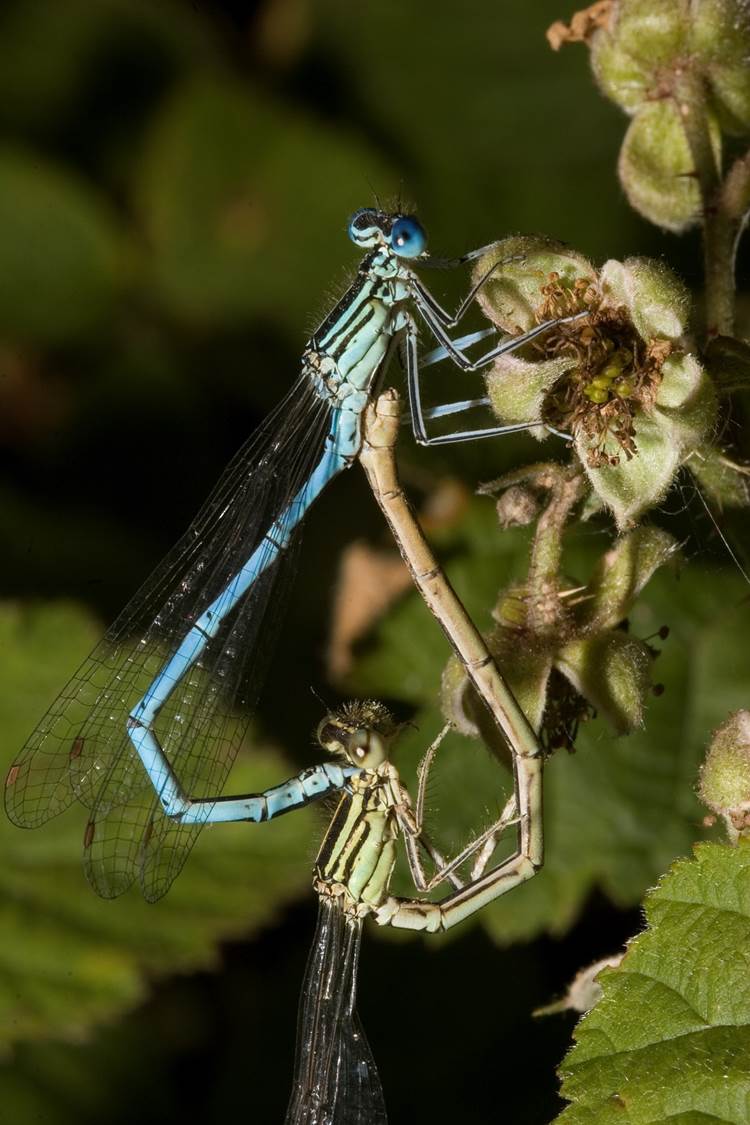Name
Platycnemis pennipes (Pallas, 1771)
Family:
Platycnemididae
Status in Britain and Ireland:
locally common
Local Status:
local
Size:
Overall body length 35-37mm
Hindwing length 19-23mm
Flight period:
Mid May until mid August
Photograph © B. Kemp
Male White-legged Damselfly
The body is blue but this can often be very pale with a ‘washed-out’ appearance. The thorax can be greenish in colour and has broad antehumeral stripes with narrower stripes on the sides. A thin black dorsal line extends down the abdomen to segment 6. Segments 7-9 are black with a thin blue dorsal line. Segment 10 is entirely blue. Eyes are blue. The legs are unique amongst British damselflies as the tibia (lower part) is broad and flattened giving a feather like appearance (known as feather legs in America). They are creamy white with a black line extending down the length. Wings are clear with distinctive small chestnut pterostigma.
Photograph © D. Williams
Female White-legged Damselfly
The body is a creamy white whilst immature and referred to as form ‘lactea’. With maturity the body changes to a greenish yellow with a more pronounced paired dorsal line running the length of the body to segment 9. Eyes are brown. Pterostigma are chestnut coloured. Females also have broad flattened tibia though not as exaggerated as in the males.
Similar Species
Immature Common Blue Damselfly has a pale body and legs however the broad white tibia and feather like appearance of the White-legged Damselfly legs should easily distinguish this species.
Behaviour
Like the demoiselles the males engage in a courtship display. The females perform a jerking flight to attract a male, and in response the male makes a prominent display with his broad feathery legs before copulation takes place. Oviposition is carried out in tandem and the eggs are laid into floating or emergent vegetation. Where the population is sufficiently large they tend to congregate amongst tall grasses at the waterside.
Habitat
Unshaded slow flowing streams and rivers with lots of emergent and floating vegetation, also on canals.
Shropshire Distribution
Local records date back to 1933 at Montgomery Canal at Aston Locks where this species is frequently recorded to this day. Butler (1982) and Lockton et al. (1996) both described White-legged Damselfly as being on the northern limit of it’s range in Shropshire. This still holds true though the distribution within the county has expanded with far more sightings in the north west. This is due to numerous sightings on the Montgomery Canal and the River Morda and an increase in records on the mere at Ellesmere. There has also been an increase in records centrally notably on the Rea Brook since the late 1990s. Records have also been made on the Rivers Roden and Perry and there has been an increase in sightings at Whixall Moss. The River Severn remains a stronghold and White-legged Damselfly is often seen here and on pools nearby.
Where to see in Shropshire
Llangollen Canal at Whixall Moss and between Blakemere and Colemere, Rea Brook at Shrewsbury, River Severn at Hampton Loade, Montgomery Canal at Aston Locks.




